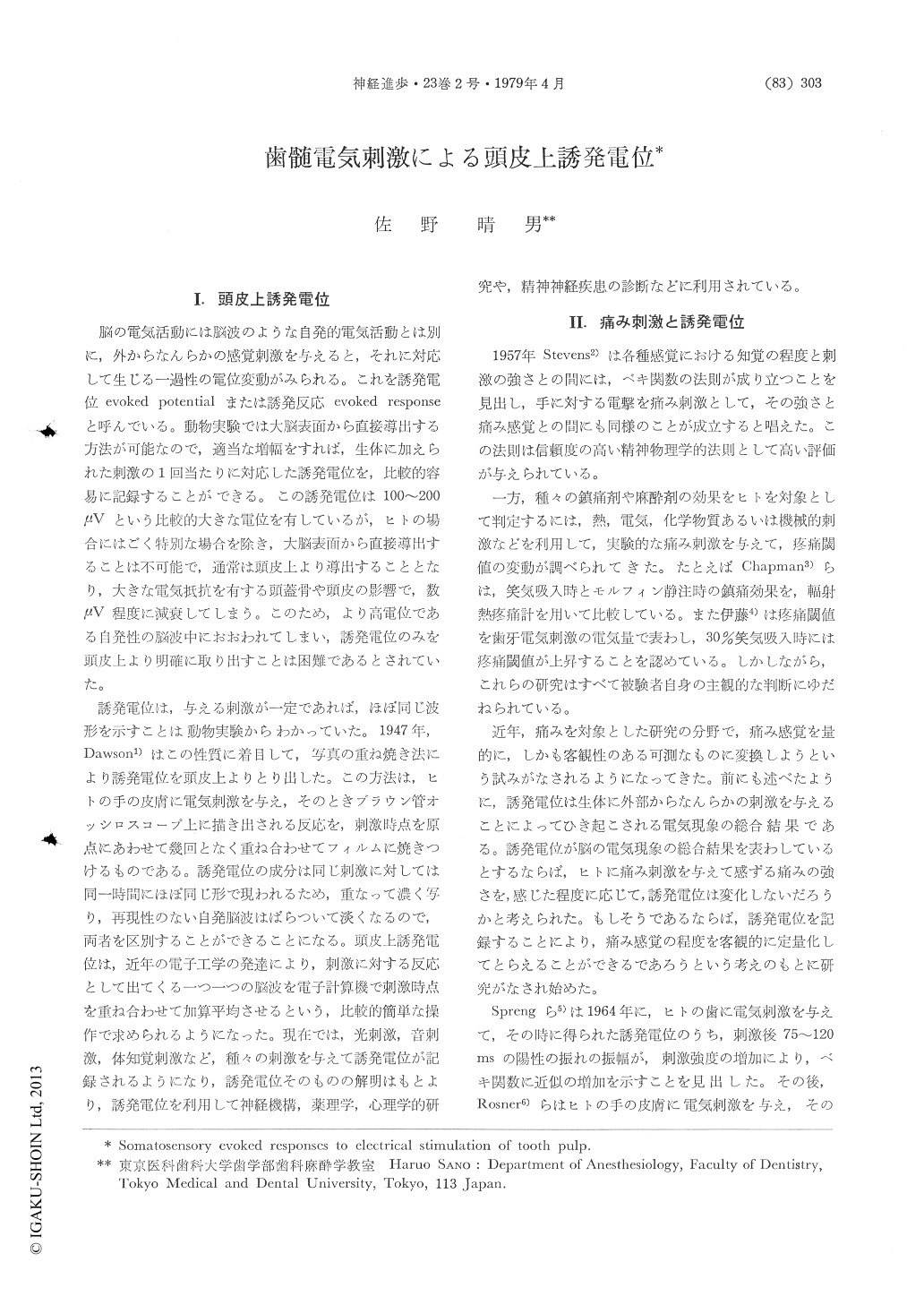Japanese
English
- 有料閲覧
- Abstract 文献概要
- 1ページ目 Look Inside
I.頭皮上誘発電位
脳の電気活動には脳波のような自発的電気活動とは別に,外からなんらかの感覚刺激を与えると,それに対応して生じる一過性の電位変動がみられる。これを誘発電位evoked potentialまたは誘発反応evoked responseと呼んでいる。動物実験では大脳表面から直接導出する方法が可能なので,適当な増幅をすれば,生体に加えられた刺激の1回当たりに対応した誘発電位を,比較的容易に記録することができる。この誘発電位は100〜200μVという比較的大きな電位を有しているが,ヒトの場合にはごく特別な場合を除き,大脳表面から直接導出することは不可能で,通常は頭皮上より導出することとなり,大きな電気抵抗を有する頭蓋骨や頭皮の影響で,数μV程度に減衰してしまう。このため,より高電位である自発性の脳波中におおわれてしまい,誘発電位のみを頭皮上より明確に取り出すことは困難であるとされていた。
誘発電位は,与える刺激が一定であれば,ほぼ同じ波形を示すことは動物実験からわかっていた。1947年,Dawson1)はこの性質に着目して,写真の重ね焼き法により誘発電位を頭皮上よりとり出した。この方法は,ヒトの手の皮膚に電気刺激を与え,そのときブラウン管オッシロスコープ上に描き出される反応を,刺激時点を原点にあわせて幾回となく重ね合わせてフィルムに焼きつけるものである。
Summary
Thanks to recent advancements in electronics, somatosensory evoked potentials can now be recorded from the scalp of human subjects by means of computer averaging techniques. Some reports on attempts to measure pain sensation objectively by observing sensory evoked potentials have been published. Potentials evoked by elec-trical stimulation of tooth pulp can be supposed to represent tooth pain. I recorded evoked potentials of human tooth pulp and found that the amplitude of the negative-positive-negative component, which showed a 100~400 ms latency, increased as the electrical stimulation was strengthened.

Copyright © 1979, Igaku-Shoin Ltd. All rights reserved.


